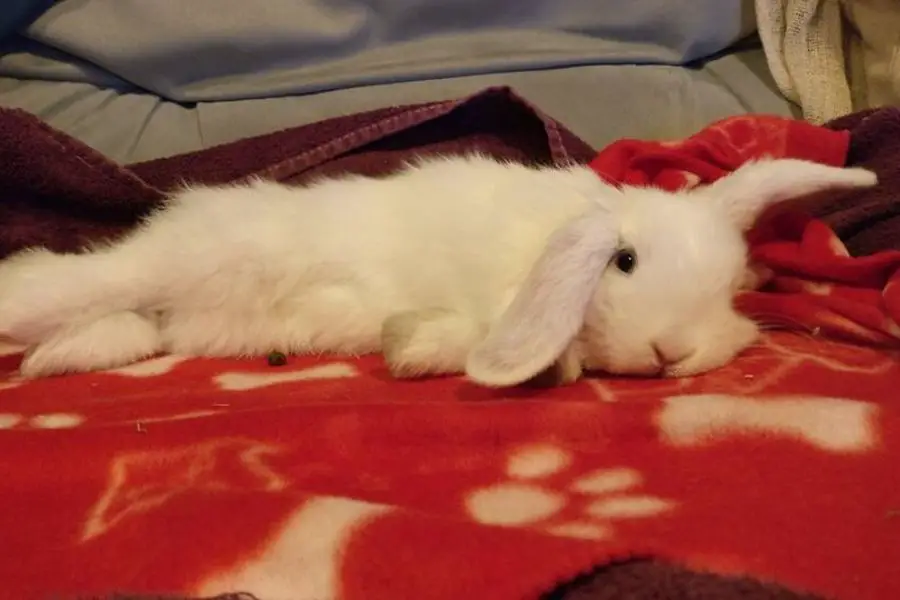Are rabbits faster than cats? Discover the surprising truth in our latest post. While wild rabbits rely on their senses to avoid predators, how do they fare against domestic pets like cats? We’ll explore everything you need to know about rabbit speed, from the science behind their running abilities to the fastest breeds out there. Don’t miss out on this essential guide to rabbit survival – read on now!
While both animals run at similar speeds, a rabbit’s ability to maintain speed over distance means that if an average rabbit and an average cat were to go head-to-head in a race, the rabbit would come out on top.
While we’re happy for the rabbit to take the win in this hypothetical race the reality depends on the breed of the rabbit and the breed of cat it’s up against. Even the fastest of the lagomorphs – the brown hare, which clocks in at around 45 mph (70 kph) would be very unlikely to be able to out run the fastest cat – the cheetah, clocking in at between an incredible 75 miles per hour (120 kph).
Is a rabbit faster than a cat?
Domestic rabbits (most similar to the wild cottontail rabbit) run at a similar speed to a cat at around 30 mph (48 kph). The fastest lagomorphs are actually the hares with a jackrabbit (arctic hare) being capable of around 37 mph (60 kph) and the brown hare fastest of all being able to reach 45 mph (70 kph).
Of course, the speed of a rabbit depends on a lot of factors. Naturally, wild rabbits will use their speed more than the average domestic pet rabbit, indeed, speed can be the difference between life and death for a wild rabbit.

For our domestic companions, the requirement of speed is not as urgent, although if you have a large space available you may see your rabbit zipping around the yard on occasion.
Why do rabbits run so fast?
Being able to run quickly is essential for the survival of the wild rabbit. They have powerful fast-twitch leg muscles and large back feet which allow them to explode into a burst of speed, making quick strides and reaching their top speed very quickly. Using these evolutionary traits, rabbits are able to outrun many predators, even those with a much larger stride.
A rabbit’s small size and low center of gravity also enable it to change direction very quickly, this is a useful tactic if it has to go up against predators that hunt in packs such as the wolf.
Despite their physical advantages – speed, superior sight, and hearing, wild rabbits face many challenges, as such most survive in the wild for just a year or two. In contrast, our domestic rabbits can live for upwards of 10 years.
Why domestic rabbits rarely hit high speeds
If a rabbit does not have sufficient room to play or worse still, a poor diet it will probably be unlikely to be able to reach the dizzying speeds that wild rabbits can achieve.
Domestic rabbits rarely need to escape from predators, however, should the need arise (for example if the pet is being chased by an over-excited pup) a healthy rabbit would not have a problem reaching a similar 30 mph speed.
Unfortunately, the domestic rabbit’s physical (and often emotional) needs are misunderstood by some owners and they are rarely provided with the exercise space necessary to be able to stretch their legs properly.

Diet is another factor that some owners fail on with pet rabbits, in particular, providing sufficient good quality hay. Rabbits have a very specialized digestive system that requires a continuous supply of fiber in the form of good-quality hays and grasses.
Failure to provide enough fiber or giving excessive amounts of mixed food or pellets can sometimes lead to obesity and a rabbit that will not be unable to move around at its natural speed. Continued poor diet is likely to lead to other health issues including dental problems or even the life-threatening gastrointestinal stasis
How to keep your rabbit in tip-top physical shape
One way to keep a rabbit in good physical shape is to give it ample room to play and explore. At the very least an exercise space of around 32 square feet (8ft X 4ft) should be provided in addition to a clean dry sleeping/eating area, if this is not achievable due to yard/garden size consider giving your rabbit free roam of your house (or even a room of its own).

Another way to keep a rabbit active and mentally stimulated is to provide a companion. Rabbits are intelligent social animals that enjoy the company of their own kind. Having a playmate will encourage activity and keep the animal mentally stimulated, especially during times when you’re not around. Just one point if you are thinking of a companion for an existing rabbit – always opt to adopt!
Finally, the very best thing you can do for a rabbit’s continued health is to provide the nutrients and energy it needs through a good diet. You can find an extensive guide on the rabbit diet as well as a useful lookup tool in our post here (link to the post: What Can Rabbits Eat? Complete Guide).
Rabbit speed compared to other animals
If you’re wondering how rabbits fare in the speed ranks against other animals, we’ve put together this table comparing them to some other well-known animals.
| Animal | Top Speed (kph) | Top Speed (mph) |
|---|---|---|
| Cheetah | 120 | 75 |
| Mountain Lion | 80 | 50 |
| Kangaroo | 71 | 44 |
| Greyhound | 70 | 43 |
| Gazelle | 70 | 43 |
| Zebra | 64 | 40 |
| Dolphin | 64 | 40 |
| Tiger | 64 | 40 |
| Hyena | 60 | 37 |
| Jackrabbit (hare) | 60 | 37 |
| Cottontail Rabbit | 48 | 30 |
| Polar Bear | 40 | 25 |
| Komodo Dragon | 20 | 13 |
| Elephant | 16 | 25 |
Conclusion
While rabbits may not be the fastest in the animal kingdom, they can certainly hold their own against a lot of their natural predators. Their speed along with their heightened senses has helped the rabbit not only to survive but to thrive the many challenges that nature throws at it. Certainly, a domestic rabbit’s speed means that an average cat would probably choose to save its energy rather than waste its time giving chase.
Frequently Asked Questions
Will a cat kill a fully-grown rabbit?
Cats are capable of killing fully grown rabbits however it is quite common for domestic cats and rabbits to co-exist without any problems at all. Although most breeds of rabbits are smaller in comparison to cats, rabbits are capable of surviving an attack from a cat, kicking out with their powerful back legs, or delivering a powerful bite if threatened.
Is a rabbit faster than a dog?
There are many dog breeds that are capable of outrunning a rabbit including the greyhound however during a chase rabbits tend to outmaneuver dogs through very quick direction changes often referred to as zig-zagging. Along with their stamina, this means that rabbits have a great chance of escaping when chased by even the fastest breeds of dogs.
